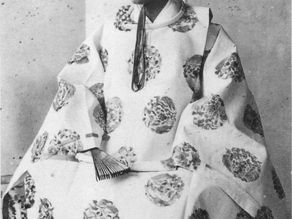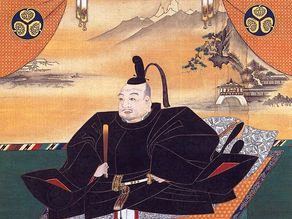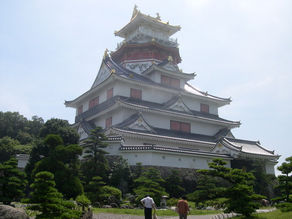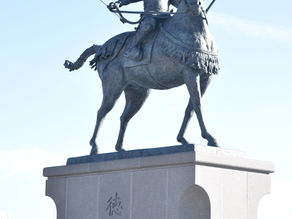top of page

additional information

Glossary
This section serves as a Glossary of definitions which are used heavily throughout the book and website, or to go further in-depth on topics, individuals, nations, or concepts that would be too lengthy to include within the paragraph itself.
Search


Tokugawa Yoshinobu
Tokugawa Yoshinobu (德川 慶喜) (1837–1913) was the 15th and last shogun of the Tokugawa shogunate. His tenure as shogun was marked by the...
2304583d
Aug 4, 2024


Tokugawa Iemitsu
Tokugawa Iemitsu (徳川 家光) (1604–1651) was the third shogun of the Tokugawa shogunate, succeeding his father, Tokugawa Hidetada. His reign...
2304583d
Aug 4, 2024


Tokugawa Hidetada
Tokugawa Hidetada (徳川 秀忠) (1579–1632) was the second shogun of the Tokugawa shogunate, succeeding his father, Tokugawa Ieyasu. His...
2304583d
Aug 4, 2024


Tokugawa Ieyasu
Tokugawa Ieyasu (徳川 家康) (1543–1616) was a prominent Japanese daimyo (feudal lord) and the founder of the Tokugawa shogunate, which...
2304583d
Aug 4, 2024


Toyotomi Hideyoshi
Toyotomi Hideyoshi (豊臣 秀吉) (1537–1598) was a prominent Japanese daimyo (feudal lord), warrior, and statesman who played a crucial role in...
2304583d
Aug 4, 2024


Oda Nobunaga
Oda Nobunaga (織田信長) (1534–1582) was a prominent Japanese daimyo (feudal lord) and military leader during the Sengoku period, a time of...
2304583d
Aug 4, 2024


Uesugi Kenshin
Uesugi Kenshin (上杉 謙信) (1530–1578) was a notable Japanese daimyo (feudal lord) during the Sengoku period, renowned for his military...
2304583d
Aug 4, 2024


Takeda Shingen
Takeda Shingen (武田 信玄) (1521–1573) was a prominent Japanese daimyo (feudal lord) during the Sengoku period, a time of intense military...
2304583d
Aug 4, 2024


Dutch East India Company
The Dutch East India Company, known as the Verenigde Oostindische Compagnie (VOC) in Dutch, was a powerful and influential trading...
2304583d
Aug 4, 2024


Ryukyu Kingdom
The Ryukyu Kingdom (琉球國) was an independent kingdom that existed from the 15th century until it was annexed by Japan in the late 19th...
2304583d
Aug 4, 2024


Republic of Ezo
The Republic of Ezo (蝦夷共和國), also known as the Ezo Republic, was a short-lived independent state in northern Japan during the late Edo...
2304583d
Aug 4, 2024


Kyoto
Kyoto (京都) is a city located in the Kansai region of Japan, historically significant as the imperial capital for over a thousand years....
2304583d
Aug 4, 2024


Edo
Edo (江戸) is the former name of Tokyo and served as the de facto capital of Japan during the Tokugawa shogunate from 1603 to 1868. The...
2304583d
Aug 4, 2024


Sengoku Period
The Sengoku period (戦国時代, Sengoku jidai), often referred to as the "Warring States period," was a time of social upheaval, political...
2304583d
Aug 4, 2024


Bakumatsu Period
The Bakumatsu period (幕末時代, Bakumatsu jidai) refers to the final years of the Edo period (1603-1868) in Japan, from 1853 to 1868. This...
2304583d
Aug 4, 2024


Azuchi-Momoyama Period
The Azuchi-Momoyama period (安土桃山時代, Azuchi-Momoyama jidai) is a significant era in Japanese history, spanning from approximately 1573 to...
2304583d
Aug 4, 2024


Koku
A Koku (石) is a traditional Japanese unit of volume that was historically used to measure quantities of rice and, by extension, to denote...
2304583d
Aug 4, 2024


Daimyo
A daimyo (大名) was a powerful Japanese feudal lord who ruled most of Japan from their vast, hereditary land holdings. They were...
2304583d
Aug 4, 2024


Shogun
A ‘Shogun’ (将軍), is the short form of the official title Sei-i taishōgun (征夷大将軍) meaning “great general who subdues the eastern...
2304583d
Aug 4, 2024
bottom of page
